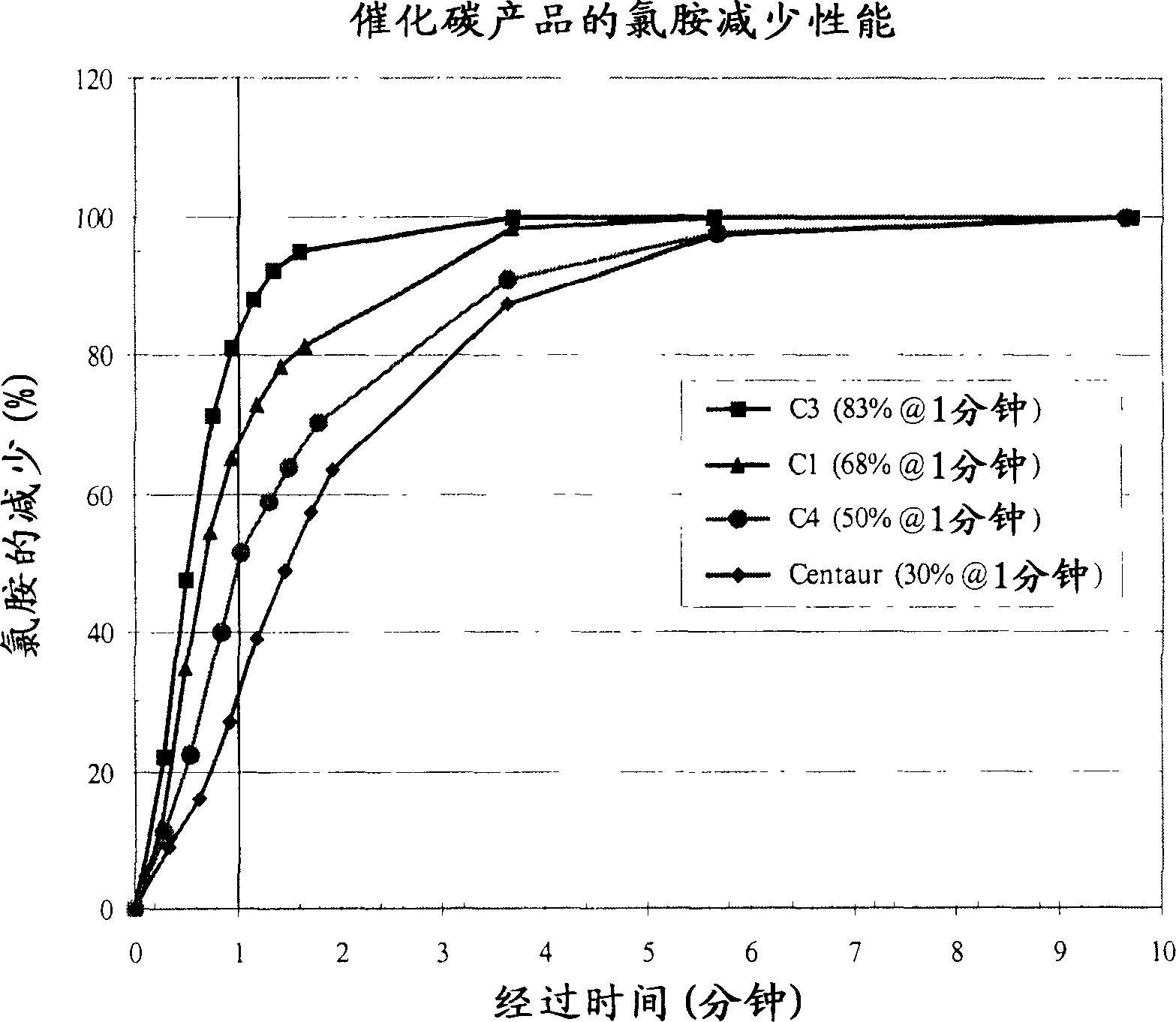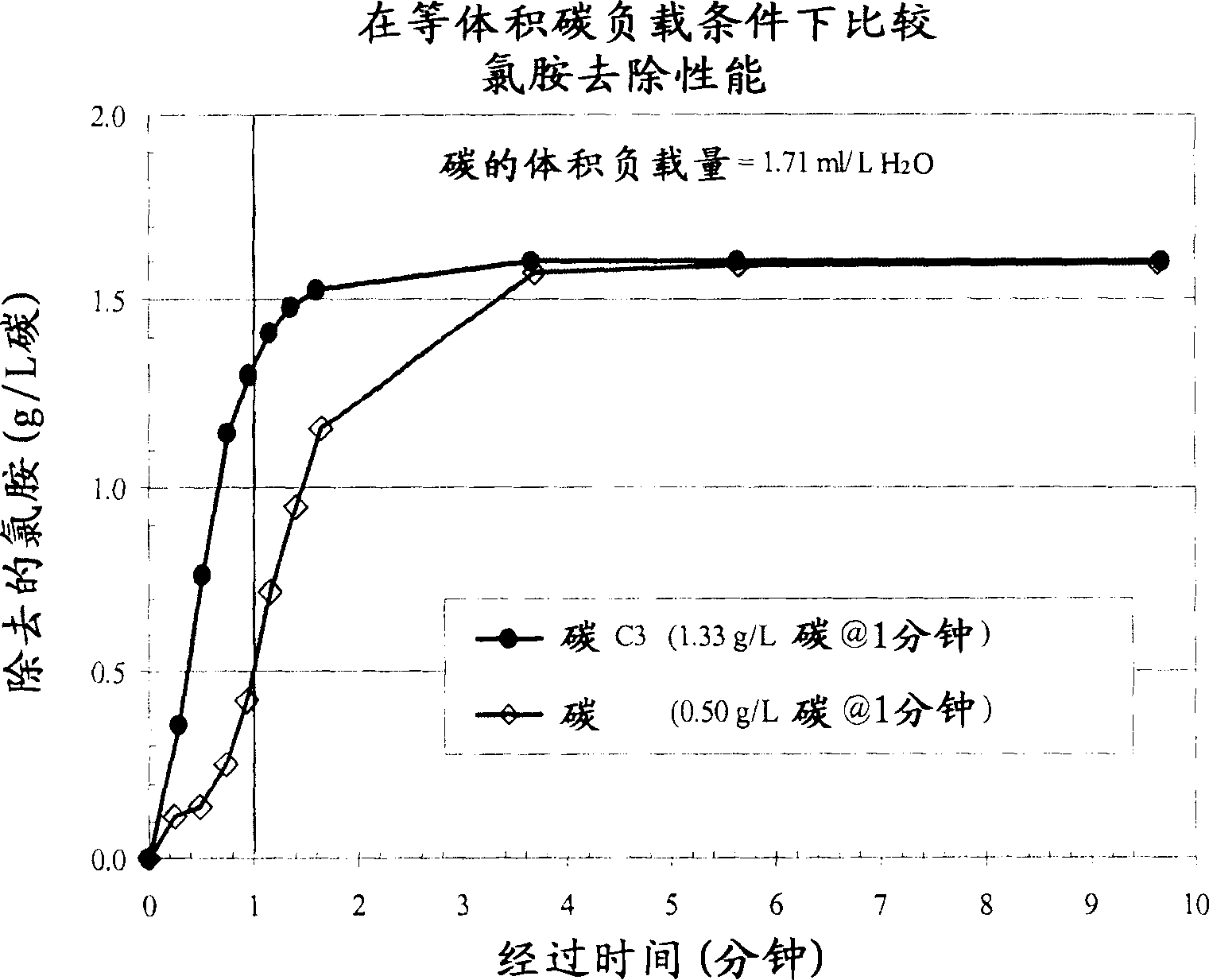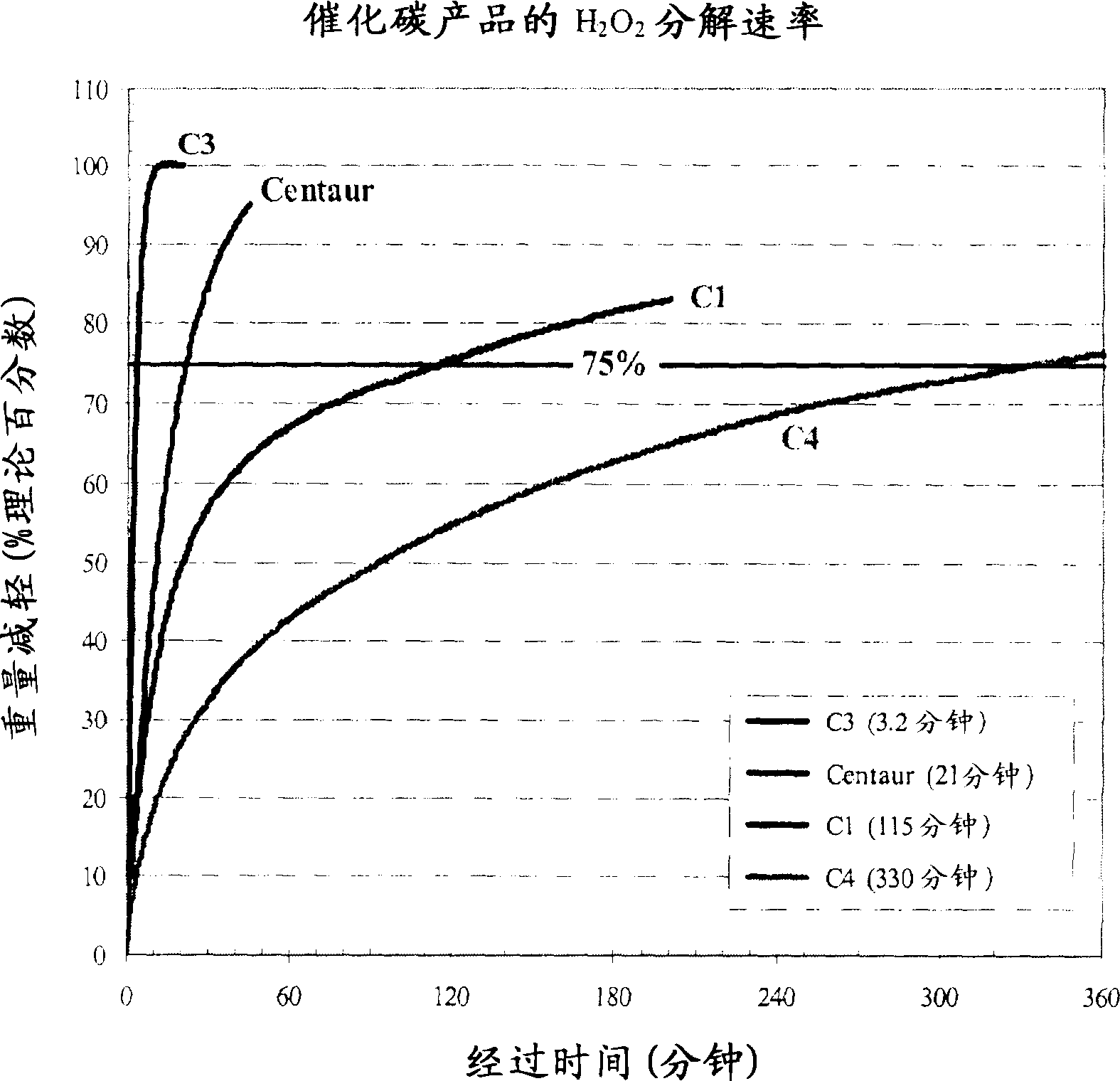Removal of chloramines from drinking water with improved activated carbon
A technology of activated carbon and chloramine, applied in the direction of water pollutants, carbon compounds, non-polluting water treatment, etc., can solve problems such as unsatisfactory, poor performance, and inability to remove chloramine
- Summary
- Abstract
- Description
- Claims
- Application Information
AI Technical Summary
Problems solved by technology
Method used
Image
Examples
Embodiment 1
[0027] 400 g of water containing chloramine (approximately 3 ppm) was equilibrated at 21°C. A 200 mg (± 1%) sample of carbon was added to the stirred solution and a stopwatch was started to record the elapsed time. 10 ml aliquots of the carbon / water suspension were withdrawn at periodic intervals and immediately filtered to remove carbon from the treated water. The actual filtration time of the carbon / water suspension aliquot was recorded as the elapsed time for that aliquot. The aqueous filtrate was analyzed for chloramine content immediately after collection of aliquots of the entire carbon / water suspension. The filtrate was treated one at a time, and the DPD (N,N-diethyl-p-phenylenediamine) reagent "pillow" (Hach Company, catalog number 21056-69) for the determination of total chloramine was added to the filtrate (10 ml ), the sample was shaken for 20 seconds to develop the characteristic magenta color of the DPD-oxidation product "Wurster's dye". Measure the absorbance ...
Embodiment 2
[0032] Use equivalent catalytic carbon product, i.e. 200mg, measure embodiment 1 ( figure 1 and performance data discussed in Table 1). However, POE and POU filters for water treatment contain specific standard size filter elements and thus can accommodate a defined fixed volume of filter media. Depending on the nature of the precursor materials used to produce the carbon product, the densities of the different catalytic carbon products can vary widely, resulting in varying weights for each product in a fixed volume cartridge. For the cases discussed, the inventive carbon is produced from wood, while the Centaur product is produced from coal. For comparable particle sizes, ie > 90% - 325 mesh, the apparent density of the coal-based Centaur product is about twice that of the wood-based inventive carbon. In practice, this means that, in this example, a given volume of cartridge can hold twice the weight of Centaur product as wood-based carbon.
[0033] For illustration purpo...
Embodiment 3
[0038] The t-3 / 4-time is defined (US5338458, 5356849 and 5470748): the time at which three-quarters (75%) of the maximum temperature rise occurs during the decomposition of hydrogen peroxide by the carbon material. It is assumed that this time corresponds to the decomposition of 75% of the hydrogen peroxide present. In the "t-3 / 4 time" surrogate test used to characterize the catalytic activity of the carbon products of this invention, the decomposition of the hydrogen peroxide solution is monitored by weight loss due to oxygen evolution. Consistent with the definition of Calgon's carbon, it is assumed that "t-3 / 4 time" corresponds to the time at which the theoretical weight of oxygen is reduced by 75% due to the decomposition of the hydrogen peroxide present. The carbon weight, hydrogen peroxide solution volume, and hydrogen peroxide solution concentration are similar to those employed in the Calgon carbon test. Similarly, the reaction medium is buffered to pH7.
[0039] The...
PUM
| Property | Measurement | Unit |
|---|---|---|
| thermal decomposition temperature | aaaaa | aaaaa |
Abstract
Description
Claims
Application Information
 Login to View More
Login to View More - R&D
- Intellectual Property
- Life Sciences
- Materials
- Tech Scout
- Unparalleled Data Quality
- Higher Quality Content
- 60% Fewer Hallucinations
Browse by: Latest US Patents, China's latest patents, Technical Efficacy Thesaurus, Application Domain, Technology Topic, Popular Technical Reports.
© 2025 PatSnap. All rights reserved.Legal|Privacy policy|Modern Slavery Act Transparency Statement|Sitemap|About US| Contact US: help@patsnap.com



